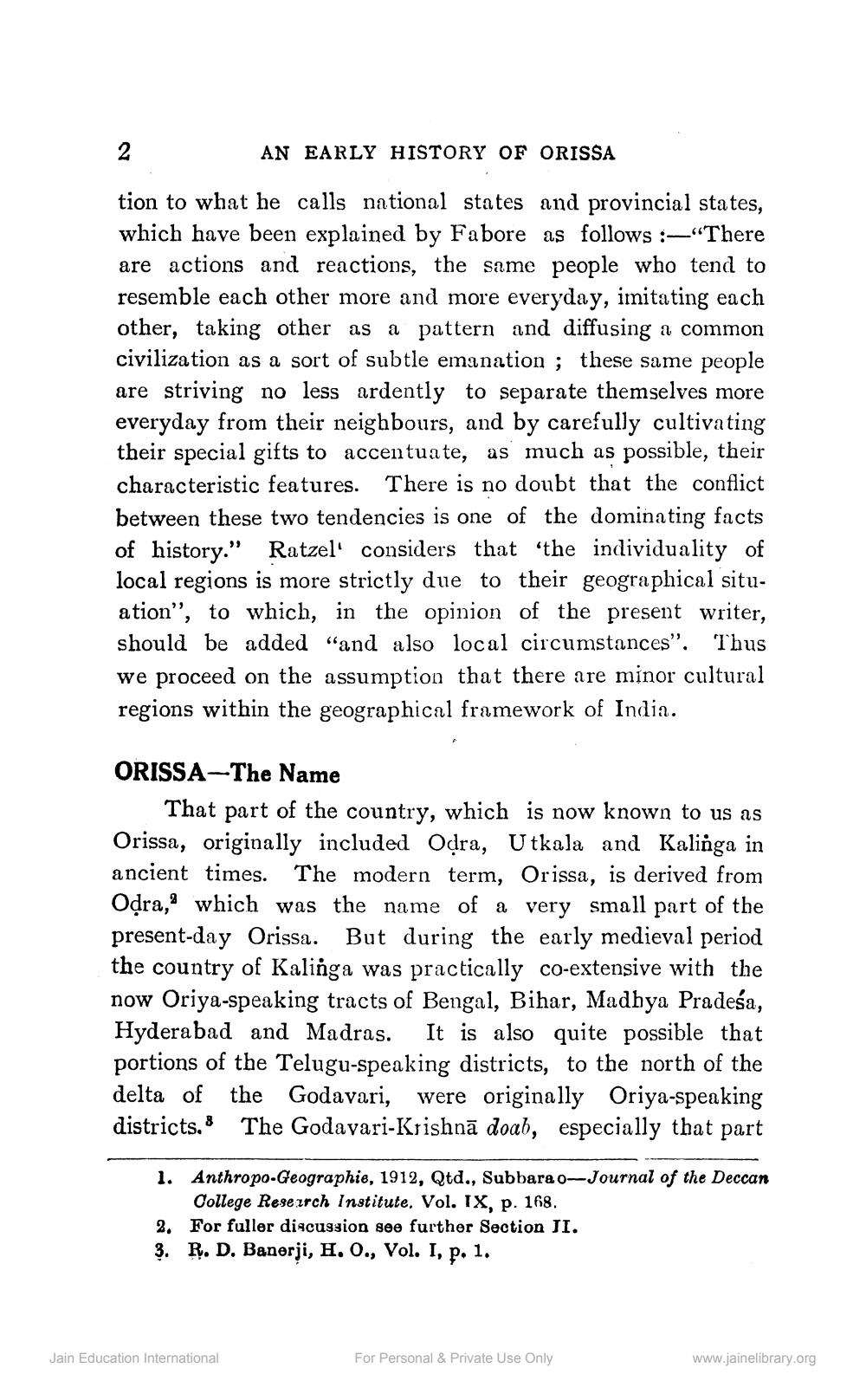________________
AN EARLY HISTORY OF ORISSA
tion to what he calls national states and provincial states, which have been explained by Fabore as follows :-“There are actions and reactions, the same people who tend to resemble each other more and more everyday, imitating each other, taking other as a pattern and diffusing a common civilization as a sort of subtle emanation ; these same people are striving no less ardently to separate themselves more everyday from their neighbours, and by carefully cultivating their special gifts to accentuate, as much as possible, their characteristic features. There is no doubt that the conflict between these two tendencies is one of the dominating facts of history.” Ratzel' considers that the individuality of local regions is more strictly due to their geographical situation", to which, in the opinion of the present writer, should be added "and also local circumstances". Thus we proceed on the assumption that there are minor cultural regions within the geographical framework of India.
ORISSA-The Name
That part of the country, which is now known to us as Orissa, originally included Odra, Utkala and Kalinga in ancient times. The modern term, Orissa, is derived from Oļra, which was the name of a very small part of the present-day Orissa. But during the early medieval period the country of Kalinga was practically co-extensive with the now Oriya-speaking tracts of Bengal, Bihar, Madhya Pradeśa, Hyderabad and Madras. It is also quite possible that portions of the Telugu-speaking districts, to the north of the delta of the Godavari, were originally Oriya-speaking districts. The Godavari-Krishnā doab, especially that part
1. Anthropo-Geographie, 1912, Qtd., Subbara |--Journal of the Deccan
College Research Institute. Vol. IX, p. 168. 2. For fuller discussion see further Section JI. 3. R. D. Banerji, H. O., Vol. I, p. 1.
Jain Education International
For Personal & Private Use Only
www.jainelibrary.org




